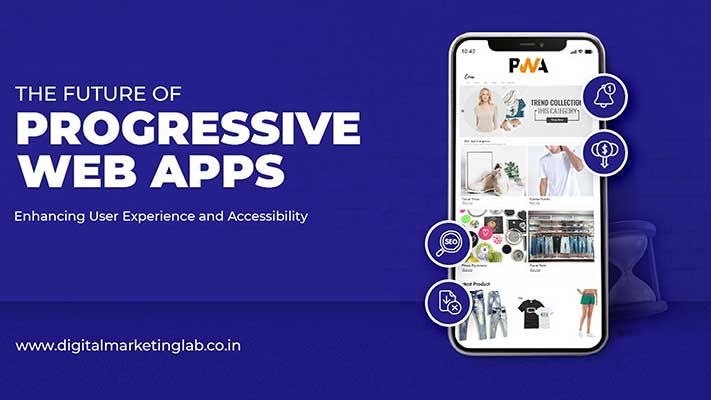The Future of Progressive Web Apps: Enhancing User Experience and Accessibility
In the rapidly evolving landscape of web app development, Progressive Web Apps (PWAs) have emerged as a powerful solution for enhancing user experience and accessibility. Combining the best of web and mobile app technologies, PWAs offer a seamless, responsive, and engaging experience to users across various devices. In this blog, we will explore the future of PWAs and how they are transforming web app services by improving user experience and accessibility.
The Rise of Progressive Web Apps: Progressive Web Apps represent the future of web app development. They leverage modern web technologies such as Service Workers, Web App Manifests, and Push Notifications to provide an app-like experience directly from the web browser. PWAs offer several advantages over traditional web apps, including faster loading times, offline functionality, and the ability to be installed on the user's home screen.
Enhancing User Experience: PWAs focus on delivering exceptional user experiences by prioritizing speed, responsiveness, and interactivity. With optimized performance and smooth transitions, PWAs eliminate the need for users to wait for web pages to load, resulting in a more engaging and seamless experience. The app-like interface, combined with features like push notifications and offline support, ensures that users can interact with the app even in low-connectivity environments.
Cross-Platform Compatibility: One of the key advantages of PWAs is their ability to work across different platforms and devices. Whether it's a desktop computer, smartphone, or tablet, PWAs offer a consistent and responsive experience, adapting seamlessly to different screen sizes and resolutions. This cross-platform compatibility reduces development efforts and costs, allowing businesses to reach a wider audience without the need for separate native apps for each platform.
Improved Accessibility: Accessibility is a crucial aspect of web app development, and PWAs are well-positioned to address this need. By adhering to web accessibility standards and leveraging assistive technologies, PWAs can ensure that users with disabilities can fully engage with the app's content and functionalities. PWAs can incorporate features like text-to-speech, keyboard navigation, and alternative text for images, making them accessible to a diverse user base.
Offline Functionality: Another significant advantage of PWAs is their ability to work offline or in low-connectivity situations. By caching data and assets locally, PWAs can provide basic functionality and content even when the user is offline. This capability is particularly useful in areas with limited internet access or during temporary network outages. Users can still access essential features, view previously loaded content, and perform certain tasks without disruption.
Discoverability and Shareability: PWAs have the potential to reach a wider audience through enhanced discoverability and shareability. As PWAs can be indexed by search engines, they can appear in search results, increasing their visibility to potential users. Additionally, PWAs can be easily shared via URLs, allowing users to share specific app screens or content with others, leading to increased organic reach and user acquisition.
Conclusion
In conclusion, the future of web app development is bright with the advancements brought by Progressive Web Apps. By leveraging the power of PWAs, businesses can create immersive and accessible experiences that cater to the evolving needs of users across various devices and platforms. Embracing PWAs can lead to improved user satisfaction, increased engagement, and broader reach in the digital landscape. As technology continues to evolve, PWAs are set to play a significant role in shaping the future of web app services.
Summary
Progressive Web Apps (PWAs) are revolutionizing web app services by enhancing user experiences, improving accessibility, and enabling cross-platform compatibility.

